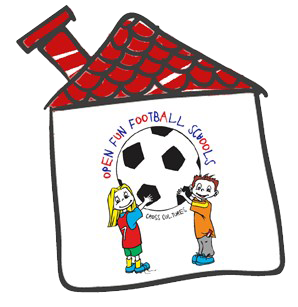Games
Orientation games
Blindfolded hunt
Players are all in a marked space. One of them, blindfolded, has the task to catch any of the other players. As he/she succeeds, they have to exchange roles. The players who are trying to run away have to call out to the blindfolded player and inform him/her about their positions to make it easier for him/her to catch them.
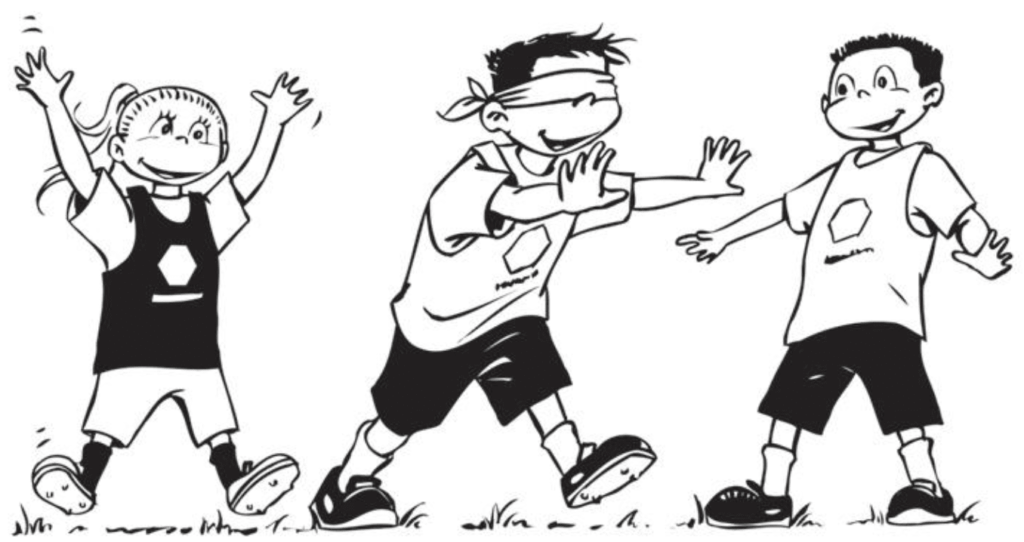
Collecting balls
Blindfolded, players have to take the balls from their initial positions into a hoop. They have a partner who instructs and guides them. The game can be played with 2-4 teams whereby each team is given 4 balls. The first team to finish the task wins the game.
Fixed goals
One of the players is blindfolded. At a given signal, he/she shoots at the goal. His/her partner who is outside the limited area signals him/her where to shoot. Pairs play against each other as do the groups.
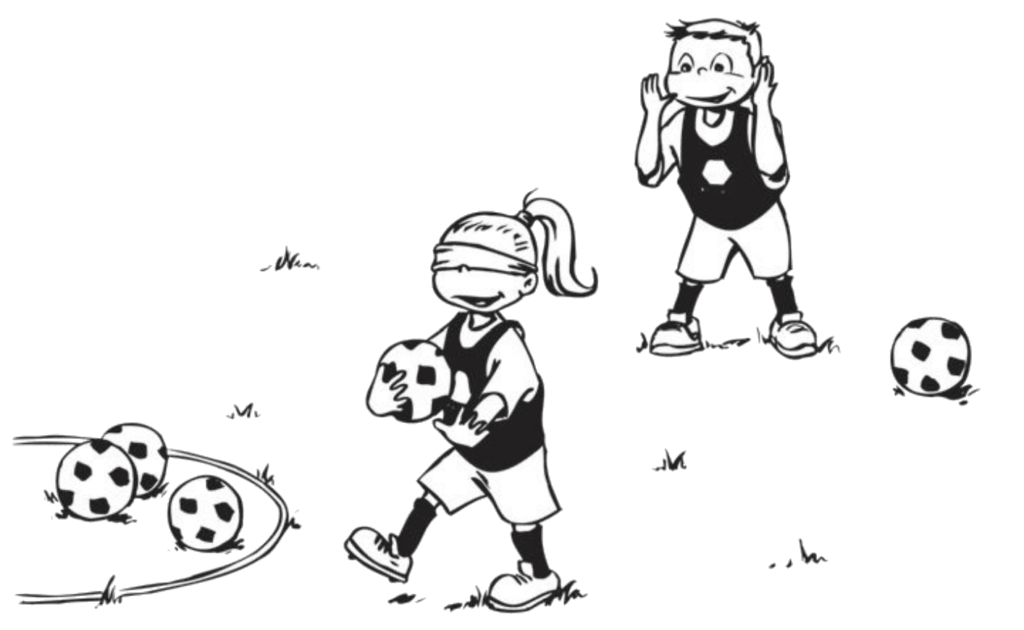
Movable goals
The player turns his/her back to the opponent’s goal and shoots at it with the heel for an agreed number of times. His/her partner who is outside the marked area signals him/her how and where to shoot. The opposing team is allowed to move their goal up to two metres to the left or right when the player is about to shoot. Pairs and teams can play against each other.
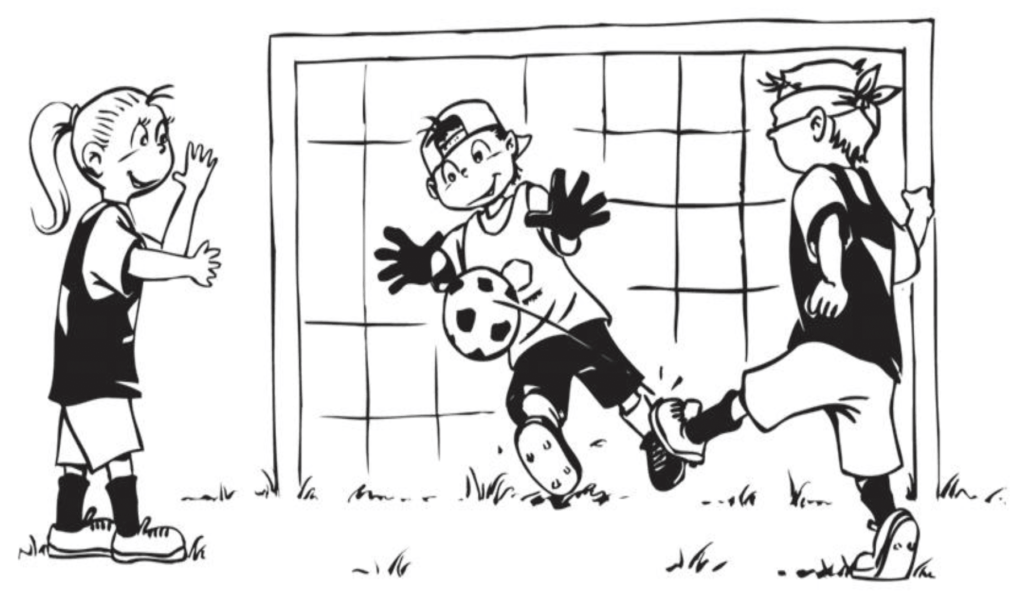
Mine field
Players from one of the teams are blindfolded, while the other team has to scatter different props in the centre of the station (cones, hoops, etc.). At a given signal, the blindfolded players start walking through the mine field trying not to knock down any of the objects (a player is allowed to touch the objects, but must not move them or knock them down. The objects must be sufficiently apart from each other so that the players can easily walk between them. Those who knock down the least number of objects win the game.
Options:
The game is essentially the same, except that each of the players is given a bat with which he/she can examine the ground trying to avoid the mine.
The game is the same, except that informants are introduced. One or two players stand at the side and warn and point their players in the right direction.
A blind coachman
Players are divided into threes, with one player in the middle. Blindfold his/her eyes and hold him tight at the wrist with one hand and at the upper arm with the other. Take him/her around the station and be careful not to let him/her walk out or bump into another person. Start moving faster. Change roles until each player in the pair has been blindfolded and taken around the station.
This game can also be played in pairs.

Moving by ear
Blindfolded, a player starts moving between several cone obstacles trying to get to a hoop. Another participant guides him/her by clapping his/her hands. The player who completes the task without knocking down the obstacles in shortest time possible wins the competition. Should the player knock down one of the cones, it has to be put back to its place before the game can be continued.

Traffic policeman
Moving in a marked area. Players are in pairs, holding hands. They are moving in the direction to which the coach is pointing right, left, forward, or backwards. This game can also be played without a ball, or with one ball (or two).
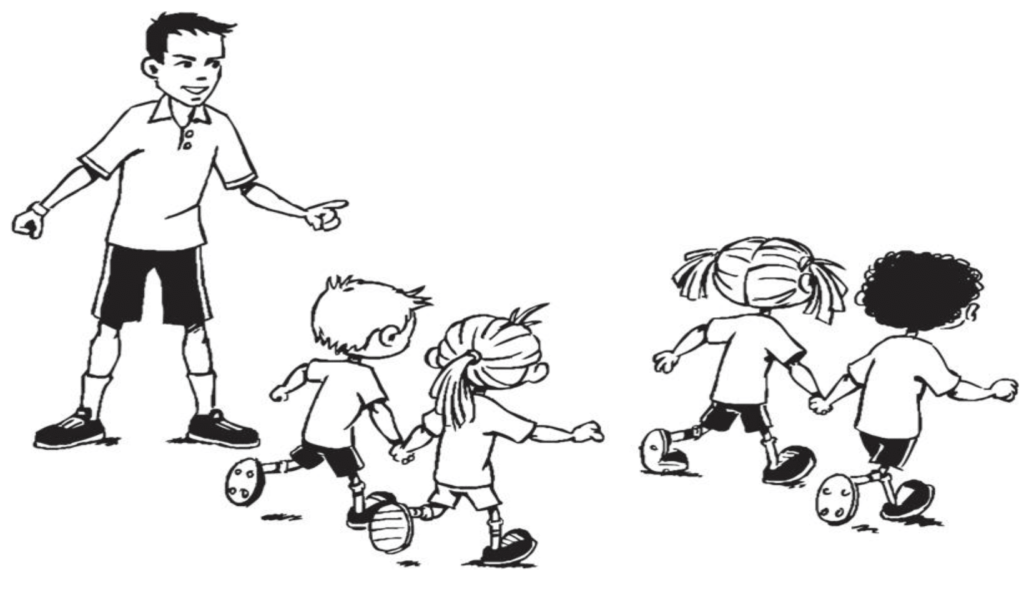
Leaving the ball in pairs upon hearing a sound signal
There are 8 pairs in a marked area. Each pair is holding hands, whereas 7 pairs have a ball at their feet. All the pairs move around and at the coachs signal, they leave their ball and run for another. One of the pairs will be left without a ball and is automatically out of the game. Now only 7 pairs and six balls remain in the field. The pair that gets the last ball wins the competition.
Passing balls in pairs
There are 8 pairs in a marked area. Each pair is holding hands, a ball at their feet. They are all moving around with their balls except the pair that does not have a ball (but it is moving as well). Pairs exchange the balls among themselves randomly. There is always one pair without a ball.
A trick
Participants form a circle. One of them is holding a ball and has the option to either trick someone in the circle or throw him/her the ball. Hands are kept to the body. The player who reacts to the ball but does not receive it gets penalty points or leaves the game.
An 8:8 game; two colours
Players divided into two teams can cooperate in various ways:
-
The ball can only be thrown to a player of the other colour.
-
The same as above, except that one must not give the ball to the same player.
-
The player who is in possession of the ball has to pass it to the player the coach tells him/her to.
-
All the above-mentioned variants can be played with the foot.
-
The same tasks but with 2, 3, or 4 balls.
